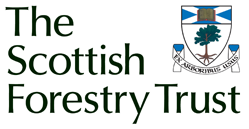Alternative Silvicultural Systems - study of adoption and development of case-studies
Carried out by: Dr. Scott McG Wilson
Summary Description:
This project recorded and evaluated applications of alternative silvicultural systems to clear-cutting (ATC) by British forest managers. Recent years have seen increasing adoption of ATC across many ownerships, with multiple objectives. No comprehensive register of examples has been produced since the 1990’s. Project work will centre on desk-review with extensive correspondence enquiries of woodland owners and managers, supported by existing field records / photographs held by the researcher. Additional field visits will be conducted to supplement these. Central project outputs will be a technical report on key issues and an up-to-date locational database of British woodlands where ATC are being adopted, with selected field examples developed into illustrated case-study reports to encourage future ATC information exchange/ site networking. There will be evaluation of methods for quantitative monitoring of silvicultural transformation. Results will be reported in the forestry press and at seminars. Outputs should inform wider adoption of alternative silviculture.
Timescale: 2012-2013
SFT Funds Awarded: £3,000
Project Outcomes:
Since Cyril Hart’s earlier review [FC Bulletin 115 (1995)], there has been considerable expansion and ramification of alternative silvicultural systems (ATC) adoption in Britain. Thirty case-studies highlight the diversity of current adoption. All 165 located examples are recorded in summary in a database. A core of longer-established examples remain on private estates with experienced retained foresters, but many recent examples are on public forests and charitable land holdings. Traditional objectives of estate landscape amenity, quality timber production and silvicultural curiosity have been augmented by new priorities of climatic/ pest and disease resilience, stand diversification, restoration of Plantations on Ancient Woodland Sites (PAWS), woodfuel provisioning and reduction of restocking costs by natural regeneration. Understanding of regeneration dynamics and operational factors has developed considerably, but availability of experienced personnel and flexible forestry machinery remains limiting. Dissemination of project outcomes, together with promotion of quantitative enumeration and demonstration, should support continued ATC adoption.
The full project technical report and site study references are available for download here
Further Information
| Title | Source | Date |
|---|---|---|
| Adoption of alternative silvicultural systems in Great Britain: A review Scott McG Wilson | Quarterly Journal of Forestry - October 2013 | 2013 |
